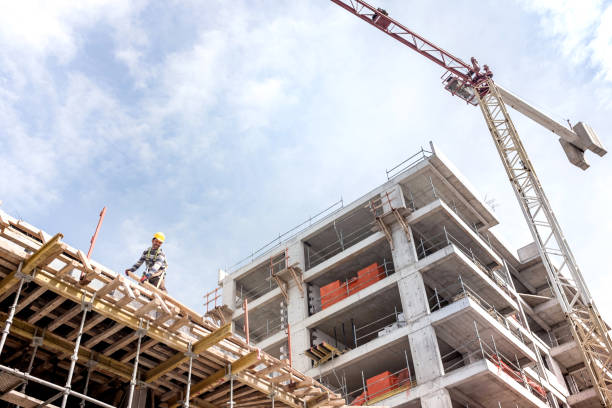Not every country builds with the same blueprint, and there’s a good reason for that. What makes a structure energy-efficient in one region might make no sense in another. As the world grows more connected, differences in how each nation tackles sustainable building continue to stand out.
Regional Climate Realities Shape Building Codes
Countries build to survive their environment first. A high-rise in icy northern Canada has to handle snow loads and freezing winds, while homes in the Middle East need to stay cool in blistering desert heat. That contrast leads to radically different building codes. An international construction company working in varied climates must adapt its practices to local weather challenges, from insulation rules to ventilation demands.
In some places, these requirements go beyond comfort—they affect energy use. A building in tropical Thailand might require natural shading and ventilation strategies that would never work in Scandinavian cities. For global construction firms, understanding how the local climate steers building standards is key to delivering projects that actually work where they’re built.
Economic Priorities Dictate Sustainability Approaches
Money often drives how green a project can realistically be. Wealthier countries may enforce stricter environmental regulations, subsidize renewable energy use, or fund innovative construction research. On the other hand, developing nations may prioritize affordability and speed over high-efficiency systems. This doesn’t mean they ignore sustainability—it just looks different.
An international construction company working across borders must respect that context. A rural health clinic in East Africa might focus on passive solar design and low-energy water systems, while a European office tower leans into advanced tech like triple-glazed windows and smart energy grids. Both aim for efficiency but through different lenses—shaped by what the local economy can support.
Cultural Perceptions Influence Green Construction Practices
Sustainability means different things to different cultures. In Japan, small, minimal homes reflect a long-standing tradition of resource mindfulness. Meanwhile, Scandinavian countries prioritize communal green spaces and energy-sharing networks. These values shape how construction is approached, even before blueprints are drawn.
For an international construction company, cultural awareness can be just as important as technical knowledge. A building that aligns with local lifestyle expectations is more likely to succeed, both functionally and socially. In some regions, tradition blends with innovation—like using ancient cooling techniques alongside solar panels—proving that green construction isn’t a one-size-fits-all concept.
Availability of Renewable Materials Alters Local Standards
What’s sustainable in one country might be impossible in another simply due to supply. Bamboo might be abundant and affordable in Southeast Asia, making it a go-to material for eco-conscious builds. In contrast, countries without easy access to renewable materials may depend more on imported green technology or recycling existing resources.
That shift shapes how sustainability is measured. Local availability influences standards set by building authorities and the actual cost of going green. An international construction company must often work closely with local suppliers and governments to design eco-friendly projects using what’s regionally practical, rather than importing costly, less accessible materials.
Regulatory Frameworks Reflect National Environmental Agendas
Some nations treat sustainable construction as a national mission. Governments in places like Germany or South Korea offer incentives and enforce aggressive energy standards. These policies influence the entire construction pipeline, from planning and materials to waste management. International builders working under these frameworks must keep up with constantly evolving legislation.
Meanwhile, countries with fewer regulations may offer flexibility—but also less guidance. In those cases, the burden falls on the construction firm to set internal benchmarks for sustainability. Global construction projects succeed more consistently when builders understand how national goals are baked into local law.
Technological Access Determines Sustainability Implementation
Green tech isn’t distributed evenly. In advanced economies, smart sensors, energy modeling software, and high-efficiency HVAC systems are standard tools. But in regions with limited access to that infrastructure, builders often rely on more traditional methods. A solar-powered water pump may be cutting-edge in one place and standard in another.
Construction firms with international reach must gauge what tech can realistically be used in a specific location. Connectivity, training, and local support all influence whether a high-tech system will actually perform long-term. Smart sustainability isn’t about pushing the latest gadgets—it’s about finding tech that fits both the project and the place.
Resource Scarcity Drives Distinctive Construction Policies
Water shortages, limited timber, or restricted land space all push countries to come up with creative building policies. Singapore’s vertical gardens and rooftop farms are answers to limited land. In water-scarce areas like parts of Australia, strict regulations encourage rainwater harvesting and drought-resistant landscaping.
These resource challenges don’t just inspire innovation—they reshape local building codes. An international construction company operating across continents must adapt to these unique limits. What’s possible in one country may be off the table in another, depending on what nature can—or can’t—provide. That’s what makes global construction so dynamic: each region’s constraints give rise to new ideas.




